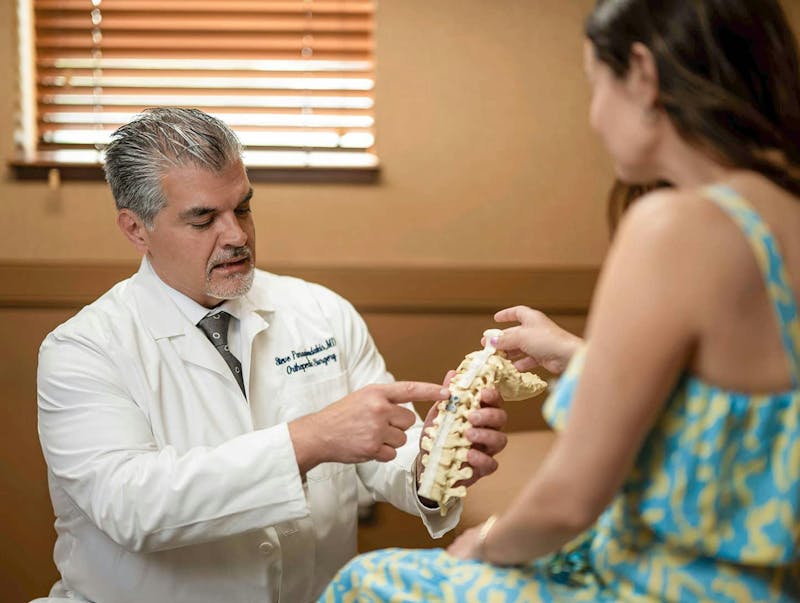
At the Center for the Functional Restoration of the Spine (CFRS), one of the most common conditions we treat is spinal stenosis. Many patients come to us worried about ongoing back or neck pain, tingling, or weakness — and often, spinal stenosis is the underlying cause.
This guide explains what spinal stenosis is, why it develops, and the treatment options available.
What Is Spinal Stenosis?
Spinal stenosis is a condition where the spaces within your spine narrow, placing pressure on the spinal cord or the nerves that travel through the spine. This can cause pain, numbness, or weakness, particularly in the back, neck, arms, or legs.
Common Causes of Spinal Stenosis
Spinal stenosis often develops gradually and may be linked to:
- Age-related changes – The natural “wear and tear” of the spine over time is the most common cause.
- Arthritis – Osteoarthritis can lead to bone spurs that narrow the spinal canal.
- Thickened ligaments – Ligaments in the spine may thicken and stiffen, pressing on nerves.
- Herniated discs – Discs that bulge or rupture can place pressure on the spinal cord or nerves.
- Congenital stenosis – Some people are born with a narrower spinal canal.
Symptoms of Spinal Stenosis
Symptoms vary depending on whether the stenosis affects the neck (cervical spine) or the lower back (lumbar spine). Common symptoms include:
- Pain or cramping in the legs when walking or standing (relieved by sitting or bending forward)
- Numbness, tingling, or weakness in the arms, hands, legs, or feet
- Problems with balance and coordination
- Neck or back pain that worsens over time
How Is Spinal Stenosis Diagnosed?
At CFRS, diagnosis begins with a detailed medical history and physical exam. Imaging studies like MRI, CT scans, or X-rays may be used to confirm spinal stenosis and determine the best treatment approach.
Non-Operative Treatment Options
The good news is that many patients improve without surgery. At CFRS, our philosophy is “conservative first, always.” Treatment options may include:
- Physical Therapy – Strengthening and flexibility exercises that support the spine and reduce pressure on nerves.
- NSAIDs (Non-Steroidal Anti-Inflammatory Medications) – To reduce inflammation and ease discomfort.
- Acupuncture – To help relieve pain and tension naturally.
- Pain Management Injections – Such as epidural steroid injections to provide targeted relief.
Surgical Options for Spinal Stenosis
When non-operative treatments are not enough and symptoms significantly impact quality of life, surgery may be considered. At CFRS, we offer advanced surgical approaches tailored to each patient’s condition:
- Laminectomy (Decompression Surgery) – Removes part of the vertebra (the lamina) to create more space and relieve pressure on the spinal cord or nerves.
- Laminotomy – Similar to a laminectomy, but only a portion of the lamina is removed to reduce pressure while preserving stability.
- Foraminotomy – Expands the openings where nerve roots exit the spine, reducing nerve compression.
- Spinal Fusion – Often performed when instability is present, this procedure joins two or more vertebrae together using rods, screws, or bone grafts.
- Minimally Invasive Techniques – Whenever possible, CFRS uses less invasive surgical approaches to reduce muscle disruption, minimize blood loss, and promote faster recovery.
Why Choose CFRS?
At the Center for the Functional Restoration of the Spine, our mission is to help patients return to active, pain-free living. Whether through conservative treatments or, when necessary, surgical care, CFRS provides personalized solutions for every patient.
Schedule a Consultation
If you’re experiencing ongoing back or neck pain that may be related to spinal stenosis, our team at CFRS is here to help. Let’s find the right path to relief together.
📍 The Center for the Functional Restoration of the Spine
📞 732.380.1212
🌐 myspinedoc.com

